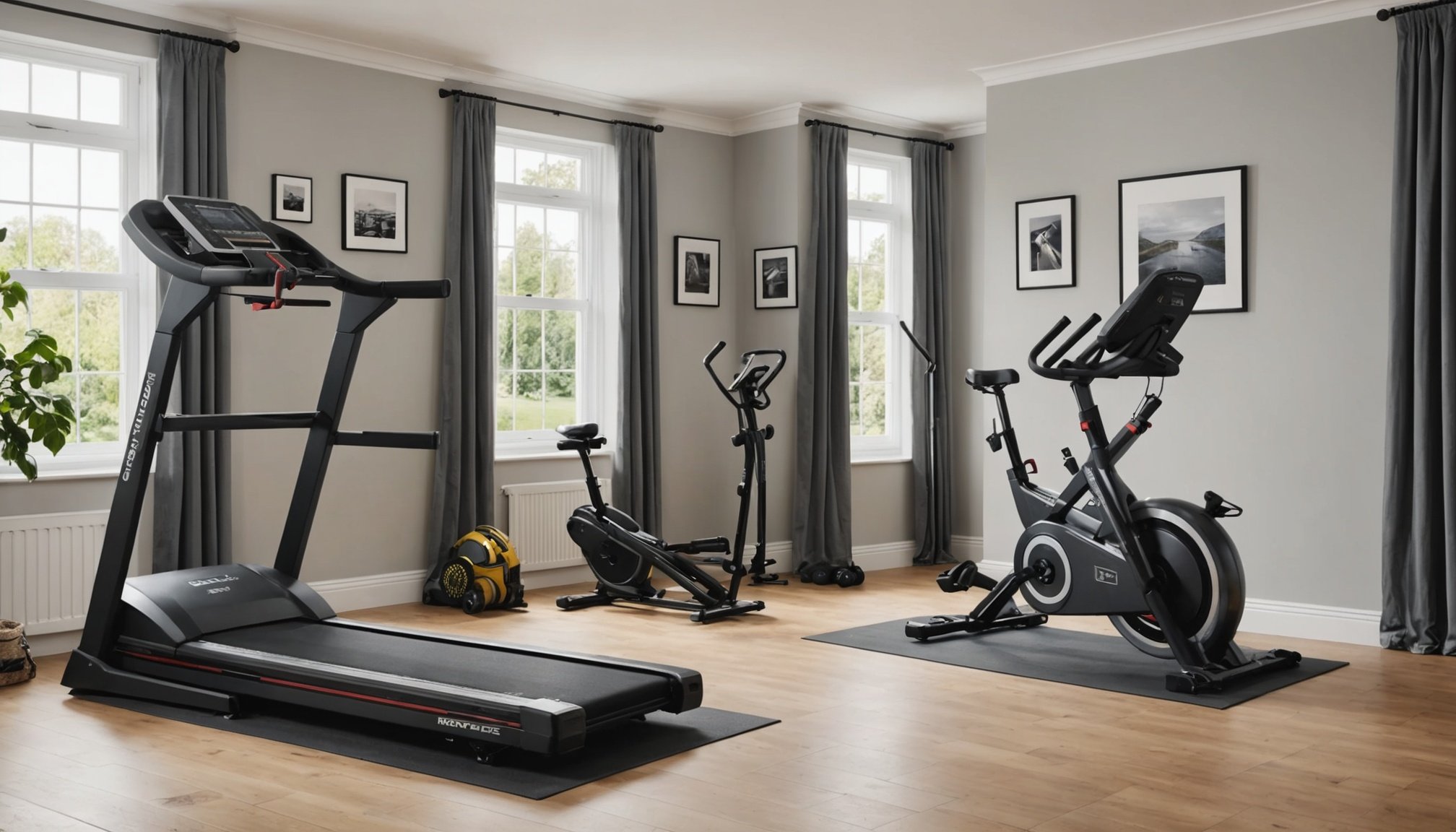Preparing for Your Home Gym Relocation
Moving a home gym involves several important steps to ensure a smooth transition. A thorough assessment of your gym equipment is fundamental. First, determine what items can be disassembled and what needs special handling. Large machines like treadmills or elliptical trainers might need expert help to dismantle safely.
Start by creating a moving checklist tailored for gym equipment. This checklist should highlight each piece of equipment, its disassembly needs, and packing requirements. Include gym packing tips to help protect equipment from damage during transportation. Items like weights and benches may appear robust but can be susceptible to scratches or dents if improperly handled.
Also to discover : Ultimate relocation handbook for uk homes with multiple fireplaces: crucial steps for a smooth move
Once your checklist is ready, it’s crucial to schedule a moving date. Consider family obligations and your current fitness regime to plan logistics around personal commitments. Align the schedule with any moving services to avoid last-minute hassles. Inform all involved parties, such as family members or movers, about the timeline for clearer communication and seamless operations.
By addressing these details in your moving preparations, you can avoid unexpected surprises and ensure that your home gym is ready to set up efficiently in its new location.
Topic to read : Key considerations for moving to a uk home featuring a generous basement space
Disassembling Your Home Gym Equipment
Successfully disassembling your home gym equipment is crucial for a smooth relocation. To begin, ensure you have the right tools for disassembly. Commonly required tools include adjustable wrenches, screwdrivers, and Allen keys. Having these on hand will make the process more efficient and safer.
Tools Needed for Disassembly
- Adjustable Wrenches: Essential for loosening and tightening bolts of varying sizes.
- Screwdrivers: Necessary for removing screws from panels and coverings.
- Allen Keys: Often required for assembling and disassembling exercise machines with specific screws.
Step-by-Step Disassembly Guide
Disassembling gym equipment involves an understanding of each machine’s components. Start with simple pieces like weights and benches. For more complex equipment, such as treadmills or elliptical trainers, refer to the manual. If unsure, seek professional assistance to avoid damaging your equipment.
Labeling Parts for Easy Reassembly
A critical step is labeling each part during disassembly. Use tags and markers to indicate where parts belong, which simplifies the reassembly process. Organizing screws and small components in labeled bags ensures no pieces are lost. Proper labeling not only aids in the reassembly but helps preserve the integrity of your equipment in the move.
Packing and Protecting Your Equipment
Packing your gym equipment correctly is essential for its safety and longevity during transit. Choosing the right packing materials can make a significant difference. Bubble wrap, for instance, offers excellent cushioning for delicate parts and electronics, preventing scratches and damage. Additionally, using sturdy cardboard boxes provides structural support, particularly for smaller items like dumbbells or weight plates.
When it comes to securing equipment, make sure to tightly wrap parts to prevent shifting. Stretch film is ideal for holding components together and offering water resistance. For heavy machinery, using moving blankets can prevent scratches and dents. Moreover, consider securing straps for items prone to rolling or shifting.
To protect sensitive electronics like control panels or monitoring devices, enclose them in anti-static bags before wrapping. This reduces the risk of static damage, ensuring devices function perfectly once set up again.
In terms of tips, always disassemble larger equipment as much as possible for packing. This reduces the likelihood of parts getting lost or damaged. Also, label each box or package according to its contents. By doing so, you streamline the unpacking process and ensure everything ends up in the right spot in your new gym space.
Logistics of Moving Your Home Gym
The logistics of moving a home gym involves various critical decisions and preparations. Selecting an appropriate moving service is essential to ensure safe transportation. When considering professional movers versus DIY, factor in the complexity and size of your equipment. Professional movers offer expertise and insurance options, mitigating risks associated with damaging valuable gym assets.
Choosing a Moving Service
Factors to consider when selecting a mover include reputation, cost, and specialisation in gym equipment handling. Not all moving services have experience with complex gym machinery, so verify their credentials carefully.
Transportation Regulations in the UK
Understanding transportation regulations in the UK is crucial, especially with bulky gym equipment. The UK mandates specific rules regarding vehicle loading and road safety. Ensure that any hired service complies with these laws to prevent legal issues. Check if any particular permits are needed when moving oversized items.
Budgeting for Your Move
Budgeting is a fundamental part of the relocation process. Be mindful of additional costs that may arise, such as insurance for your equipment or special services for fragile items. Request quotes from multiple movers to compare services and prices, ensuring you receive the most value for your investment. A well-planned budget helps in managing financial expectations effectively.
Setting Up Your Home Gym in the New Space
Establishing your home gym in a new location calls for thoughtful planning and precise execution. Effective layout designs tailored to your room’s dimensions can maximise usability and comfort. Begin by assessing the available space to determine the optimal arrangement for your equipment. Consider how room layout will affect movement and access to each machine.
Reassembling and Connecting Gym Equipment
Once your space is ready, it’s time to reassemble your gym equipment. Begin with larger pieces, such as treadmills or elliptical trainers, that demand accurate assembly for safe operation. Follow the manufacturer’s manuals or labels made during disassembly to ensure all parts reconnect correctly. Engage a professional if you feel uncertain about complex machinery to avoid costly errors.
Safety Checks Before Using Reassembled Equipment
After reassembly, perform meticulous safety checks. Ensure all bolts and screws are tightened, electronics are properly connected, and equipment is stable. This minimizes the risk of injury and equipment malfunction. Test each machine slowly to confirm its functionality before returning to a regular workout routine. By diligently setting up your gym, you ensure a safe, efficient, and motivating fitness environment.
Overcoming Challenges During Your Move
Relocating a home gym involves unique moving challenges. Let’s explore common issues and practical strategies to ensure a smooth transition.
Common Issues Faced During Relocation
Gym relocation issues often arise due to the complexity of disassembly and transportation. Many owners face difficulties with oversized equipment or keeping parts organized—the latter can lead to a frustrating reassembly process.
Solutions for Equipment Damage
Preventing equipment damage requires problem-solving strategies. Use adequate packing materials like bubble wrap and moving blankets tailored to each item. Pay special attention to covering vulnerable spots on treadmills or elliptical trainers. This foresight reduces repair costs and preserves the lifespan of your equipment.
Dealing with Logistics Delays
Logistics delays can disrupt schedules and increase stress. These often occur from unforeseen transportation or availability issues. Mitigate these delays with a comprehensive moving checklist that accounts for potential setbacks, allowing extra time for each step of the process. Open communication with movers and flexibility in scheduling also helps manage these expectations.
With attention to these key challenges and solutions, you can enhance your gym relocation experience by transforming potential obstacles into manageable tasks.

